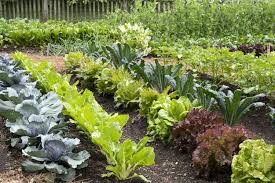
The Art of Garden Planting
Planting a garden is more than just placing seeds or seedlings into the soil. It is an art form that requires careful planning, consideration, and creativity. Whether you are a seasoned gardener or a beginner, mastering the art of garden planting can transform your outdoor space into a vibrant and thriving oasis.
Planning Your Garden
Before you start planting, take the time to plan out your garden layout. Consider factors such as sunlight exposure, soil quality, and water availability. Think about the types of plants you want to grow and how they will complement each other in terms of height, color, and blooming season.
Choosing the Right Plants
Selecting the right plants for your garden is crucial for its success. Consider native plants that are well-suited to your climate and soil conditions. Choose a variety of plants to create interest and diversity in your garden. Pay attention to plant spacing and growth habits to ensure that each plant has enough room to thrive.
Planting Techniques
When it comes to planting, proper technique is key. Make sure to dig a hole that is deep enough for the plant’s roots but not too deep. Gently loosen the roots before planting to encourage healthy growth. Water newly planted seedlings thoroughly and mulch around them to retain moisture and suppress weeds.
Caring for Your Garden
Once your garden is planted, regular maintenance is essential for its health and vitality. Water your plants regularly, especially during dry spells. Remove weeds promptly to prevent competition for nutrients. Prune dead or damaged branches to encourage new growth.
Enjoying the Fruits of Your Labor
As your garden grows and flourishes, take the time to enjoy the beauty and tranquility it brings. Harvest fresh produce from your vegetable garden, cut flowers from your flower beds, or simply sit back and relax in your outdoor sanctuary. Gardening is not just about planting; it’s about connecting with nature and reaping the rewards of your hard work.
Top 6 Essential Tips for Successful Garden Planting
- Choose the right plants for your garden based on sunlight and soil conditions.
- Ensure proper spacing between plants to allow for healthy growth.
- Water your garden regularly, especially during dry periods.
- Mulch around plants to retain moisture and suppress weeds.
- Monitor for pests and diseases, and take appropriate action if needed.
- Regularly prune and deadhead plants to promote growth and flowering.
Choose the right plants for your garden based on sunlight and soil conditions.
Selecting the appropriate plants for your garden is crucial for their success and overall health. By carefully considering the sunlight exposure and soil conditions of your garden, you can choose plants that are well-suited to thrive in that specific environment. Plants that match the sunlight requirements and soil type of your garden will have a better chance of flourishing, resulting in a more vibrant and sustainable garden space.
Ensure proper spacing between plants to allow for healthy growth.
Ensuring proper spacing between plants is essential for promoting healthy growth in your garden. Adequate spacing allows each plant to access sufficient sunlight, water, and nutrients without competing with neighboring plants. It also helps prevent the spread of diseases and reduces the risk of overcrowding, which can lead to stunted growth and poor air circulation. By giving your plants room to thrive, you are setting them up for success and creating a harmonious environment where they can flourish and reach their full potential.
Water your garden regularly, especially during dry periods.
To ensure the health and vitality of your garden, it is crucial to water it regularly, particularly during dry periods. Adequate watering is essential for plant growth, flowering, and fruit production. During times of drought or hot weather, plants can quickly become stressed and wilted without sufficient moisture. By maintaining a consistent watering schedule and providing enough hydration to your garden, you can help your plants thrive and flourish even in challenging environmental conditions.
Mulch around plants to retain moisture and suppress weeds.
Mulching around plants is a beneficial practice in garden planting. By adding a layer of mulch, you can help retain moisture in the soil, reducing the frequency of watering needed for your plants. Additionally, mulch acts as a natural barrier that suppresses weed growth by blocking sunlight and inhibiting weed seed germination. This simple tip not only helps maintain soil moisture levels but also minimizes the competition for nutrients between your desired plants and unwanted weeds, promoting a healthier and more vibrant garden overall.
Monitor for pests and diseases, and take appropriate action if needed.
Monitoring for pests and diseases is a crucial aspect of successful garden planting. By staying vigilant and regularly inspecting your plants, you can identify any potential issues early on. If pests or diseases are detected, taking prompt and appropriate action is essential to prevent them from spreading and causing damage to your garden. This proactive approach helps maintain the health and vitality of your plants, ensuring a thriving garden for you to enjoy.
Regularly prune and deadhead plants to promote growth and flowering.
Regular pruning and deadheading of plants is a crucial tip to promote healthy growth and abundant flowering in your garden. By removing dead or damaged branches and spent flowers, you encourage the plant to redirect its energy towards producing new growth and blooms. This practice not only improves the overall appearance of your garden but also stimulates the plant’s natural processes, resulting in a more vibrant and flourishing landscape.
